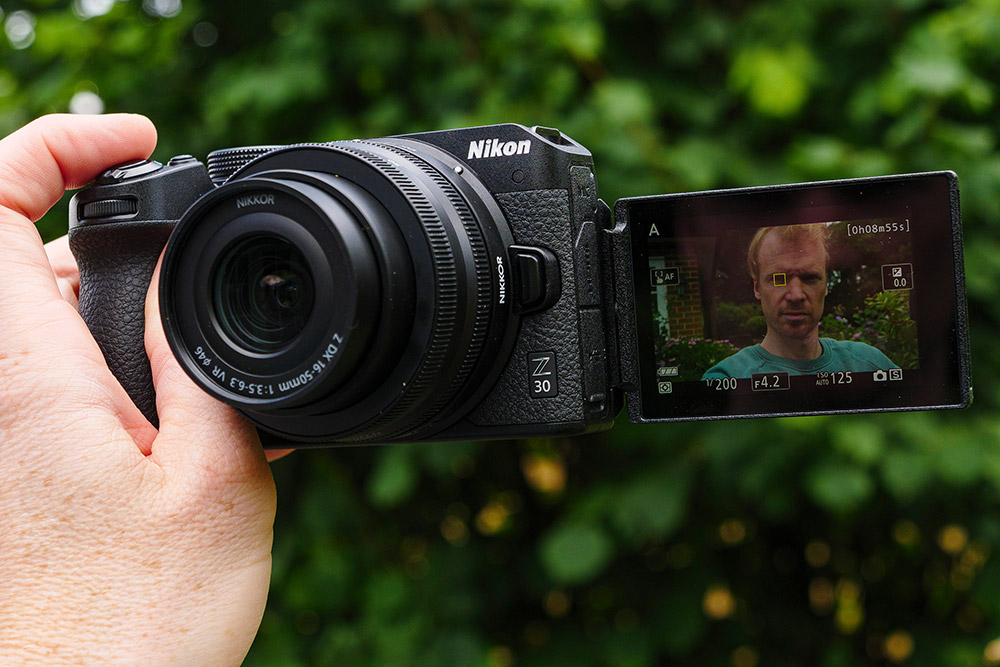Who Invented the First Mirrorless Camera? A Deep Dive for Pros
The evolution of camera technology has dramatically shifted the landscape of professional photography. One of the most groundbreaking innovations in recent years is the mirrorless camera. But who invented the first mirrorless camera? This question has intrigued many professionals in the field. Understanding the origins and evolution of this revolutionary piece of equipment allows photographers to fully appreciate its capabilities and the edge it provides in capturing stunning visuals.

The Genesis of the Mirrorless Camera
Before delving into the specifics of who invented the first mirrorless camera, it is essential to grasp the context in which this invention was conceived. The mirrorless camera emerged as a response to the limitations inherent in traditional Digital Single-Lens Reflex (DSLR) cameras. These limitations included bulkiness, slower focusing systems, and the mechanical complexity necessitated by the mirror and pentaprism assembly used to direct light from the lens to the optical viewfinder.
Early Innovations in Camera Technology
The shift towards digital imaging was a crucial precursor to the development of mirrorless cameras. Early digital cameras, while groundbreaking, were tethered to the design principles of their analog predecessors. It was not until the mid-2000s that the industry began to imagine and conceptualize a camera system that could bypass some of the fundamental limitations of DSLRs.

The Pioneering Minds Behind the First Mirrorless Camera
In 2008, Panasonic blazed a trail in the mirrorless camera market with the introduction of the Lumix G1. The G1 was a novel and innovative creation that ditched the mirror and optical viewfinder in favor of an electronic viewfinder and a lighter, more compact form factor. This was an incredible achievement, as the Lumix G1 was the worlds first interchangeable-lens mirrorless camera and made waves among professionals who valued portability without sacrificing image quality.
Why Panasonic and the Lumix G1?
Panasonic recognized an opportunity and seized it with the Lumix G1. The pioneering of this technology was driven by the desire to reduce the bulk and mechanical complexity of traditional DSLRs while leveraging the rapid advancements in digital viewfinder technology. Professional photographers, particularly those who specialized in fields requiring significant mobility such as wildlife and street photography, quickly saw the potential of this new design paradigm.
To know more about the specific applications and useful tips for using a mirrorless camera, you can read how to use mirrorless cameras.

Evolution and Adoption Among Professional Photographers
The launch of the Lumix G1 marked the beginning of widespread innovation and competition in the mirrorless camera market. Major players like Sony, Canon, and Nikon soon followed suit, each introducing their versions tailored to different niches within professional photography. The technological improvements were palpable, with notable advancements in autofocus speed, sensor quality, and battery life.
Mirrorless vs. DSLR: The Professional's Perspective
The debate between mirrorless and DSLR systems has been a topic of heated discussions among professionals. Mirrorless cameras, with their electronic viewfinders, offer real-time previews of exposure, depth of field, and color balance, thus reducing the need for post-processing adjustments. This real-time feedback advantage is augmented by the continuous innovations happening within the mirrorless segment.
Moreover, the compactness and reduced weight of mirrorless systems have been game-changers for photographers whose work demands agility and extended periods of handheld shooting. For instance, wedding photographers and photojournalists have embraced mirrorless cameras for their unobtrusiveness and ease of use in fast-paced environments.

The Technological Marvels of Mirrorless Cameras
A discussion on who invented the first mirrorless camera is incomplete without a nod to the subsequent advancements that have solidified their place in the professional toolkit. One of the most significant upgrades has been in autofocus systems, with many current mirrorless models boasting advanced contrast-detection autofocus that surpasses traditional phase-detection in speed and accuracy.
Sensor Quality and Innovations
The sensor technology in mirrorless cameras has also seen massive improvements. Full-frame sensors, previously confined to high-end DSLRs, have become more common in mirrorless models. These sensors provide superior image quality, dynamic range, and low-light performance, making mirrorless cameras suitable for a wide range of professional applications.
Additionally, high-resolution sensors and processors have paved the way for innovations such as in-body image stabilization (IBIS) and 4K video capabilities, which have broadened the horizons for both still and motion photography.
For professional wildlife photographers interested in the technical aspects of choosing the right gear, check out this detailed guide on Canon mirrorless cameras for wildlife photography.
Real-World Applications and Professional Insights
Professionals who have made the switch to mirrorless systems often cite their increased efficiency and adaptability in various shooting environments. For instance, the silent shooting mode available in many mirrorless models is invaluable for photographers covering events where discretion is paramount.
Adapting to Changing Needs
The versatility of mirrorless cameras makes them ideal for hybrid shooters who need to excel in both photography and videography. The seamless integration of high-quality video features has opened new revenue streams for professionals, enabling them to offer comprehensive visual coverage without the need for multiple, bulky camera setups.
For beginners or those looking to switch, understanding the fundamentals can be very helpful. A great resource for newcomers is this article on which mirrorless camera is best for beginners.
Future of Mirrorless Camera Technology
As we look forward to the future, it's clear that the journey of mirrorless camera technology is far from over. With continuous improvements in sensors, battery life, and connectivity options, the future mirrors will undoubtedly bring more convenience and innovation.
Anticipated Advancements
Expect dramatic advancements in artificial intelligence (AI) and machine learning, which will likely play a pivotal role in autofocus, scene detection, and even post-processing. Furthermore, as 5G technology becomes ubiquitous, real-time sharing and cloud-based editing will become integral parts of professional workflows.
For those seeking to delve deeper into the nuances of exposure settings and techniques for mirrorless cameras, this guide on exposure basics is a must-read.
Frequently Asked Questions
1. Who invented the first mirrorless camera?
The first mirrorless camera was invented by Panasonic with the release of the Lumix G1 in 2008. It marked the beginning of a new era in camera technology, offering a compact design without sacrificing image quality.
2. What are the advantages of mirrorless cameras over DSLRs?
Mirrorless cameras offer several advantages over DSLRs including smaller size, lighter weight, real-time electronic viewfinders, and advanced video capabilities. They are also known for faster autofocus systems and fewer mechanical parts.
3. Are mirrorless cameras suitable for professional use?
Yes, mirrorless cameras are highly suitable for professional use. They offer excellent image quality, versatility, and advanced features such as in-body image stabilization, 4K video, and silent shooting modes, making them ideal for various professional photography niches.
As an Amazon Associate, I earn from qualifying purchases.
As an Amazon Associate, I earn from qualifying purchases.

